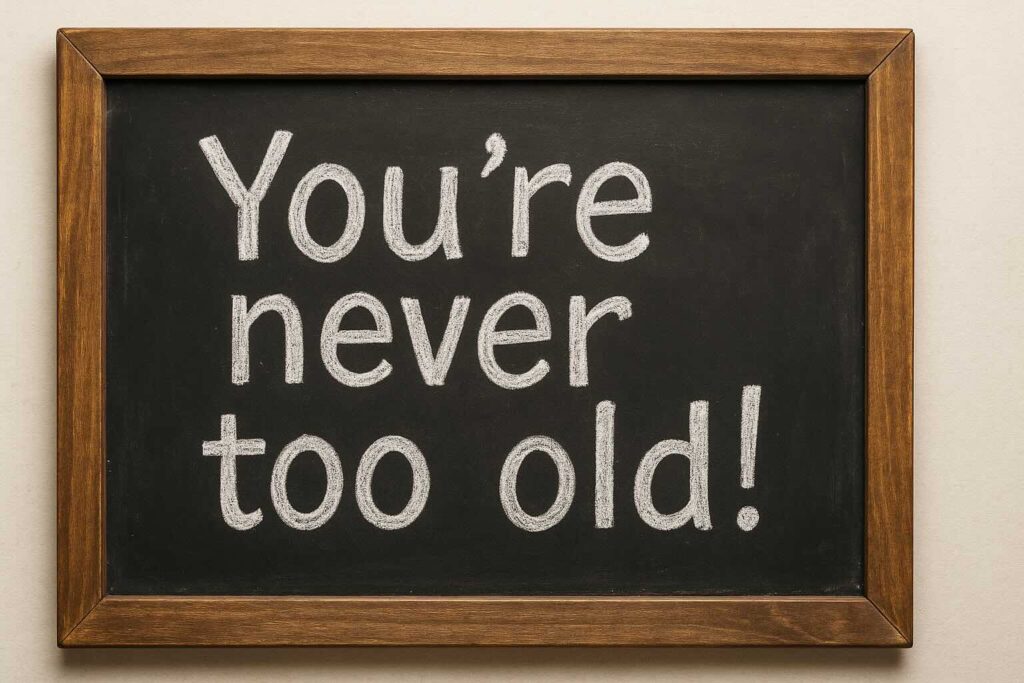
Why Avoiding All Risk Can Quietly Erode Your Retirement Security
Welcome to “Money Myths Retirees Still Believe”—a blog series that uncovers the hidden beliefs that can quietly sabotage your financial peace of mind.
Many retirees cling to common money myths that seem true but can lead to poor decisions, lost income, or unnecessary worry. Each post in this series explores one myth—like “cash is trash” or “I need to beat the market”—and replaces it with a smarter, simpler mindset.
If you’re retired or nearing retirement, this series will help you reassess your approach and feel more confident about your financial future.
The Myth: “I’m Too Old to Take Any Risk”
At age 72, Walter was proud of his careful money habits. After retiring from his job at the phone company, he moved nearly all his savings into CDs, a savings account, and a fixed annuity. “I don’t want to gamble with my money,” he’d say. “I’m too old to take risks.”
But ten years into retirement, Walter noticed something unsettling:
Prices were higher. His income wasn’t. And his once-comfortable budget was now feeling tight.
That’s the hidden danger of playing it too safe.
Walter had fallen for a common misconception:
👉 That once you retire, you can’t afford any risk.
But the truth is: avoiding all risk is itself a risk—especially if you want your money to last 20 or 30 more years.
The Real Threat: Inflation, Not Just Volatility
When we think of “risk,” most of us picture stock market crashes or losing money in a bad investment. But in retirement, the slower, sneakier risk is inflation.
Here’s what that looks like:
- That $1,000 a month you spend on groceries, utilities, and medications? In 10 years, you might need $1,300 for the exact same lifestyle.
- Fixed returns from CDs or savings accounts often don’t keep up with rising prices.
- If your money isn’t growing at least as fast as inflation, you’re actually losing purchasing power every year—even if your account balance stays the same.
Over time, that means you may need to cut back. Or worse, you may outlive your savings.
The Smarter Mindset: Take Measured, Purposeful Risk
No, you don’t need to bet your retirement on tech stocks or crypto. But some level of growth is essential—even in your 70s, 80s, or 90s.
Here’s how many retirees strike the right balance:
✅ Dividend-Paying Stocks or ETFs
These offer potential for moderate growth and steady income. They’re not as volatile as speculative stocks and can provide rising income over time.
✅ Bond Ladders
By staggering bonds to mature over different time frames (1 year, 2 years, 3 years, etc.), you reduce interest rate risk and ensure regular payouts.
✅ A “Bucket Strategy”
Divide your money into buckets:
- Short-term (cash and near-term income)
- Medium-term (dividends, bonds, REITs)
- Long-term (some growth-oriented investments to keep up with inflation)
This way, your short-term needs are safe, but your long-term money keeps growing quietly in the background.
✅ Inflation-Protected Bonds (TIPS)
These adjust with inflation and can serve as a solid “middle ground” between safety and growth.
A Real-Life Example
Gloria, a retired librarian, once believed any investment involving stocks was too risky for her age. But after working with a financial coach, she moved part of her IRA into a conservative dividend ETF and a few laddered bonds.
She didn’t “swing for the fences.” But she did aim for steady singles—just enough growth to maintain her lifestyle and fight inflation.
Ten years later, she’s still drawing income comfortably and hasn’t had to dip into her principal. Most importantly, she’s sleeping well at night.
What “Too Conservative” Looks Like
Here’s what might happen if your portfolio is 100% in CDs, savings, or low-interest annuities:
- Your money grows slower than inflation.
- You may need to spend down your principal earlier than planned.
- You could become more vulnerable to medical or long-term care costs in later years.
Remember, it’s not just what you invest in—it’s how and why.
The Takeaway
Being cautious is wise. Being frozen by fear is not.
Taking measured, intentional risk—even in retirement—can help protect your money from inflation, support your lifestyle, and give you more confidence over the long haul.
You’re not too old to invest. You’re just old enough to do it smartly.